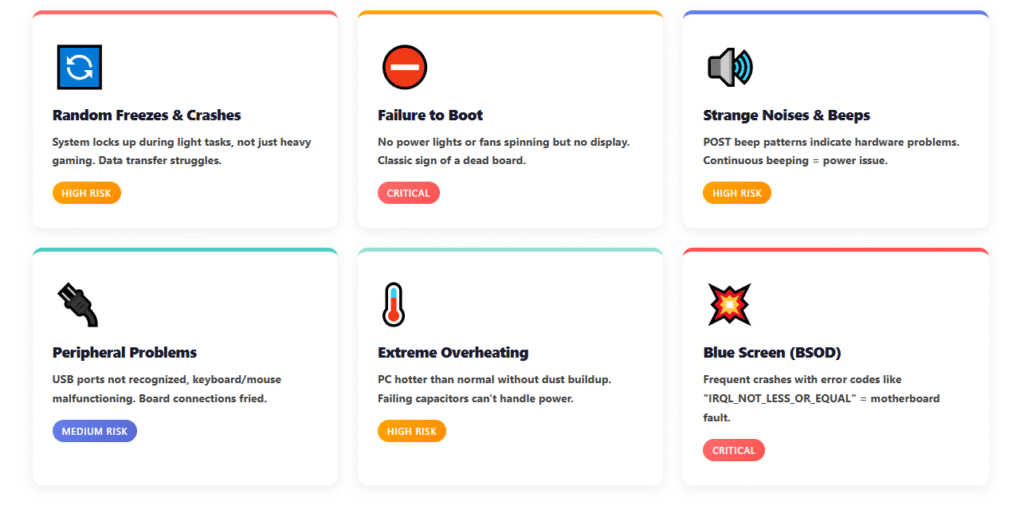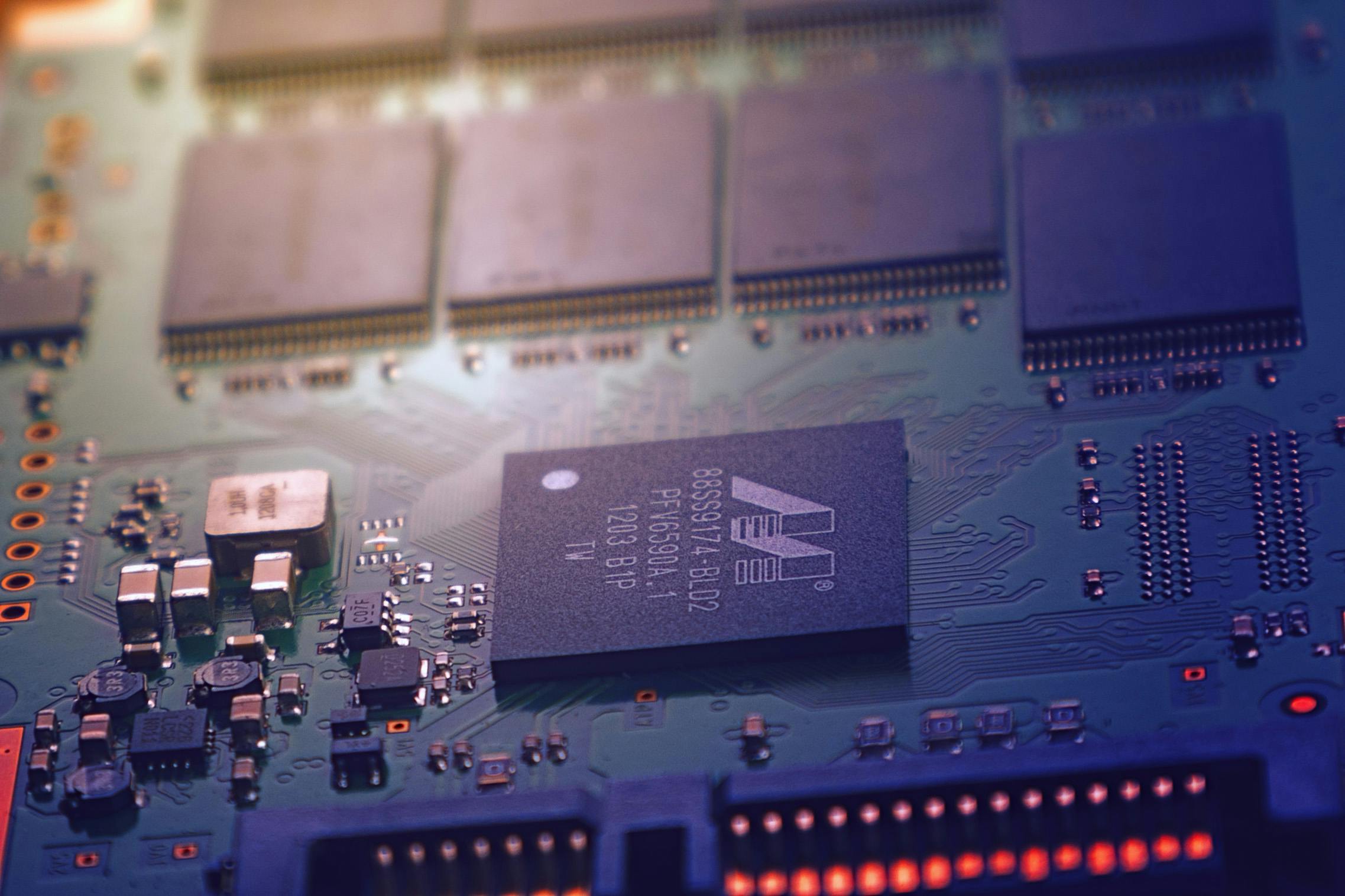Picture this: You’re deep into a late-night gaming session or crunching through a big work project when—bam—your PC freezes, crashes, or refuses to boot. Frustrating, right? I’ve been there more times than I care to count, staring at a blank screen and wondering if it’s the end of my trusty machine.
The culprit? Often, it’s the motherboard, the unsung hero that connects everything in your PC like a bustling city hub.
If you’ve ever felt that tech panic, you’re in the right place. This guide dives into how to check your motherboard on a PC, spot the most common issues, and fix them without needing a computer science degree.
Whether you’re a casual user or a tinkerer at heart, I’ll walk you through it step by step with clear tips, real-world advice, and even a handy table of fixes.
By the end, you’ll feel empowered to troubleshoot like a pro and save your rig from the scrap heap. Let’s get your PC’s core beating strong again!
What Exactly Is a Motherboard and Why Does It Matter?
Before we jump into diagnostics, let’s break down the basics. The motherboard is like the backbone of your desktop or laptop—it’s the large circuit board that houses the CPU, RAM, storage drives, and all those ports you plug things into.
It manages data flow between components, powering everything from your graphics card to your USB devices.
In my experience, ignoring motherboard health is like skipping oil changes on your car. It might run fine for years, but small glitches can snowball into big problems. Checking it regularly can prevent downtime and extend your PC’s life.
Plus, with modern boards supporting features like overclocking or RGB lighting, keeping it in top shape unlocks better performance.
Why bother learning this? A faulty motherboard can mimic issues with other parts, like a bad power supply or overheating CPU. Spotting it early saves money—no need to buy a whole new setup when a simple fix might do.
Signs Your Motherboard Could Be on the Fritz

Ever had your PC act like a grumpy old uncle, randomly shutting down or beeping at you? These could be cries for help from your motherboard. Here are the top red flags I’ve noticed over the years:
- Random Freezes or Crashes: If your system locks up during light tasks, not just heavy gaming, the motherboard might be struggling with data transfer.
- Failure to Boot: No power lights, fans spinning but no display? That’s a classic sign of a dead board.
- Strange Noises or Beeps: POST (Power-On Self-Test) beeps in patterns can indicate issues—short for hardware problems.
- Peripheral Problems: USB ports not working, or your keyboard/mouse acting wonky? The board’s connections could be fried.
- Overheating: If your PC gets hotter than a summer sidewalk without obvious dust buildup, capacitors on the board might be failing.
- Blue Screen of Death (BSOD) Errors: Frequent crashes with codes like “IRQL_NOT_LESS_OR_EQUAL” often point to motherboard faults.
Don’t panic if you see one or two—could be software. But if multiple hit at once, it’s time to investigate. I once ignored beeps on an old build, and it turned into a full meltdown. Lesson learned: Listen to your PC!
Tools You’ll Need to Check Your Motherboard
Good news: You don’t need fancy gadgets to start. Most checks use what you already have. Here’s a quick list to grab:
- Screwdriver Set: Phillips head for opening cases.
- Multimeter: For testing voltages (under $20 online).
- Antistatic Wrist Strap: Prevents zapping sensitive parts—I’ve fried a chip once without one; ouch!
- Screwdriver and Compressed Air: For cleaning dust.
- Diagnostic Software: Free tools like MemTest86 for RAM (which ties into board health) or HWMonitor for temps.
- Spare Parts: If possible, a known-good PSU or RAM stick to swap and test.
With these, you’re set for 80% of diagnostics. Pro tip: Work on a non-static surface like wood, and unplug your PC first—safety first!
Step-by-Step Guide: How to Check Your Motherboard on a PC
Alright, let’s roll up our sleeves. Checking a motherboard isn’t rocket science, but it requires patience. I’ll guide you through visual, physical, and software methods. Always power off and unplug before starting.

1. Visual Inspection: Look for Obvious Damage
Open your PC case (usually two side panels with thumbscrews). Shine a light inside and scan for:
- Burn Marks or Swollen Capacitors: Bulging or leaking parts scream “replace me!” Capacitors store power; when they fail, they look like overripe fruit.
- Dust Buildup: Thick layers can short circuits. Use compressed air to clean—gently, no vacuum suckers.
- Loose Connections: Ensure cables to the CPU, RAM, and drives are snug. A wobbly power connector mimics board failure.
I remember cleaning an ancient Dell this way; dust was the villain, not the board. Takes 10 minutes, zero cost.
2. Power-On Self-Test (POST) Check
Boot your PC and listen. Motherboards have built-in speakers or LED codes for diagnostics.
- Power on: Fans spin? Lights glow?
- No boot? Count beeps: One long, two short? RAM issue. Continuous? Power problem.
- Check LEDs: Many boards have debug lights (CPU, DRAM, VGA, BOOT). Lit ones pinpoint the fault.
If no onboard speaker, plug in headphones to the audio jack—beeps might come through. This saved me hours on a custom build.
3. Software Diagnostics: Run Tests Without Opening the Case
If it boots, use free tools:
- CPU-Z or Speccy: Download and run to view board model, temps, and voltages. Look for irregularities like voltage drops below 12V on the 24-pin connector.
- MemTest86: Boot from USB to test RAM slots—bad ones often mean board damage.
- Prime95 or AIDA64: Stress test for stability. Crashes under load? Suspect the board.
In my tinkering days, Speccy caught a voltage dip that pointed to a failing regulator on the board. Easy win!
4. Physical Testing: Swap and Isolate
This is where it gets hands-on. Ground yourself with the strap.
- Reseat Components: Remove and reinsert RAM, CPU cooler, and GPU. Corrosion on pins can cause issues.
- Minimal Boot Test: Strip to essentials—CPU, one RAM stick, PSU, monitor. Boots? Add parts one by one to isolate.
- Multimeter Voltage Check: Probe the 24-pin ATX connector. Key pins: +12V should read 11.4-12.6V; +5V at 4.75-5.25V. Low readings? Bad board or PSU.
If voltages are off but PSU tests good elsewhere, bingo—motherboard fault. Do this carefully; wrong probes can shock.
5. Advanced Check: BIOS Reset and Update
Enter BIOS (usually Del or F2 key on boot).
- Reset to defaults: Clears glitches.
- Update BIOS: Download from manufacturer’s site (e.g., ASUS, Gigabyte). Flash via USB—fixes compatibility bugs.
I’ve bricked a board once with a bad flash, so double-check files. But it often revives “dead” systems.
Common Motherboard Issues and How to Fix Them
Motherboards aren’t invincible, but most problems have fixes. Here’s a table of the big ones, based on what I’ve seen and common tech forums report. Fixes range from DIY to pro.
| Issue | Symptoms | Possible Causes | Fixes | Difficulty (1-5) |
|---|---|---|---|---|
| Capacitor Failure | Bulging/leaking parts, random shutdowns | Age, heat, poor quality | Replace capacitors (solder new ones) or swap board | 4 (needs soldering skills) |
| Power Delivery Problems | Won’t boot, low voltages | Faulty voltage regulators or bent pins | Reseat CPU/pins; test with multimeter; replace if pins damaged | 3 |
| RAM Slot Issues | Crashes, BSOD, no POST | Dirty/coroded slots or trace breaks | Clean with isopropyl alcohol; test sticks in other slots; RMA if dead | 2 |
| USB/Port Failures | Devices not recognized | Bent pins, short circuits | Inspect/clean ports; use onboard headers if available; disable in BIOS | 1 |
| Overheating | Throttling, shutdowns | Poor VRM cooling or paste dry-out | Improve case airflow; reapply thermal paste; add heatsinks | 2 |
| BIOS Corruption | Boot loops, wrong settings | Failed update or power loss | Reset CMOS (jumper or battery remove); reflash BIOS | 3 |
| PCIe Slot Problems | GPU/network card not detected | Slot damage from force | Reseat card; test in another slot; clean gold fingers | 2 |
For capacitor swaps, watch YouTube tutorials—it’s satisfying but tricky. If soldering scares you, buy a new board; they’re $100-300 for basics.
In one fix, I cleaned RAM slots on a friend’s rig, and it booted like new. Small effort, big reward!
When to Call in the Pros (And Prevention Tips)
Not every issue is DIY-friendly. If you’re seeing scorch marks, smell burning, or lack tools, take it to a repair shop—costs $50-100 for diagnosis. Replacing a full board? Factor in labor if you’re not comfy.
Prevention is key: Keep dust-free, use quality PSUs, avoid static, and update firmware. I’ve extended boards’ lives by just better cable management.
FAQs: Your Burning Questions Answered
Q: How do I know if it’s the motherboard or the CPU?
A: CPUs rarely fail outright. Test by swapping— if issues follow the board (e.g., in another PC), it’s the culprit. Tools like Prime95 help isolate.
Q: Can I check a laptop motherboard the same way?
A: Similar, but harder access. Visual checks and software work; physical swaps need disassembly guides from iFixit. Pros often handle laptops.
Q: What’s the average lifespan of a motherboard?
A: 5-10 years with care. Gaming boards last longer with good cooling.
Q: Does overclocking kill motherboards?
A: It stresses them, but safe overclocks with monitoring are fine. I’ve pushed mine gently for years without drama.
Q: Free tools for deeper scans?
A: Yes! CrystalDiskInfo for drives (board-related), or OCCT for full stress tests.
These cover the basics—feel free to ask in comments for more!
Conclusion
We’ve covered a lot: from spotting those sneaky signs of motherboard trouble to hands-on checks and a toolkit of fixes for common woes.
Remember, your PC’s motherboard is its heartbeat—treat it right, and it’ll keep ticking. Whether it’s a quick clean or a BIOS tweak, most issues are fixable without breaking the bank.
Now, grab your screwdriver and give your setup a once-over. Has this helped you troubleshoot? Share your story in the comments below—I’d love to hear if you saved your rig! If you’re into more PC tips, check out my posts on GPU upgrades or SSD swaps.
Like and share to help a friend dodge tech headaches. Your PC thanks you!

